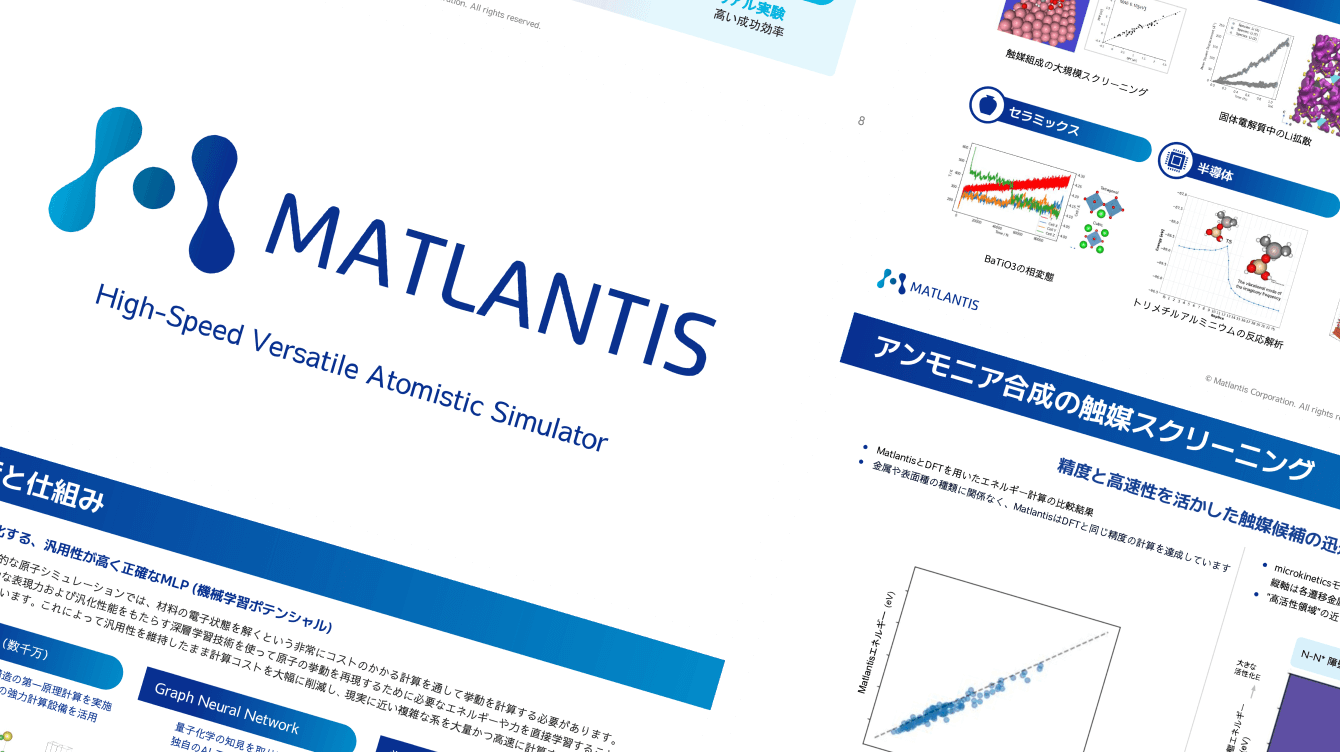Case Studies
Explore how Matlantis is being applied in real-world materials development. Discover company use cases, including their background, results, actual simulations, and research papers leveraging Matlantis.
Search by free keyword
Search by conditions
category
Beyond Human Intuition — with Matlantis
Matlantis
Portable Guide
Everything You Need to Know — Features, Benefits, and More
